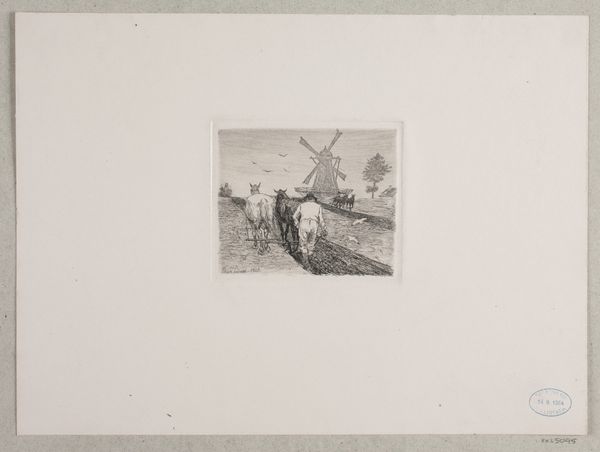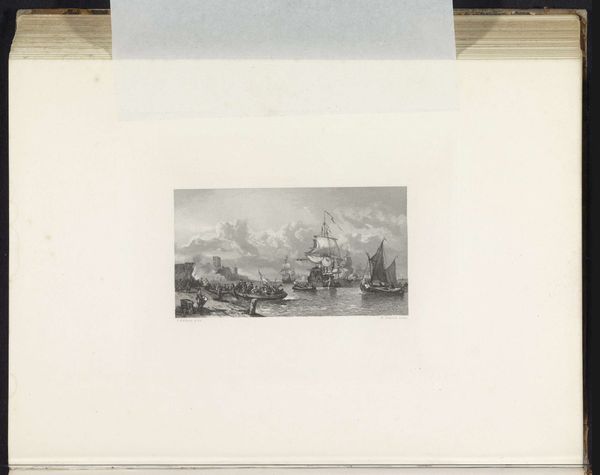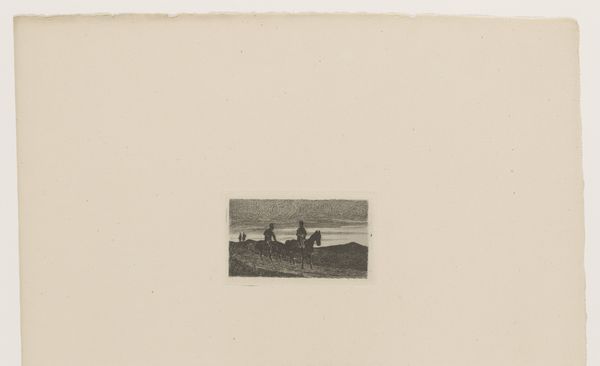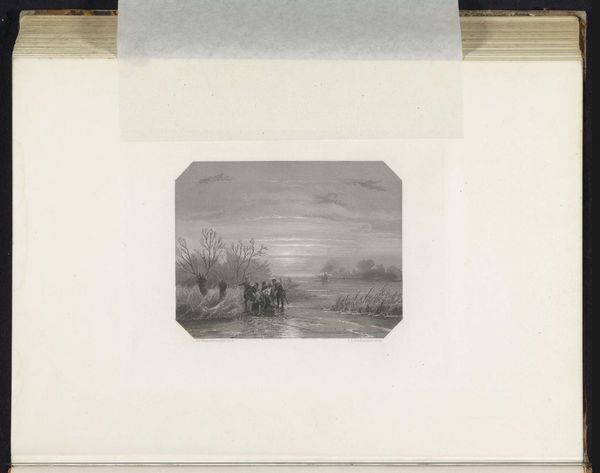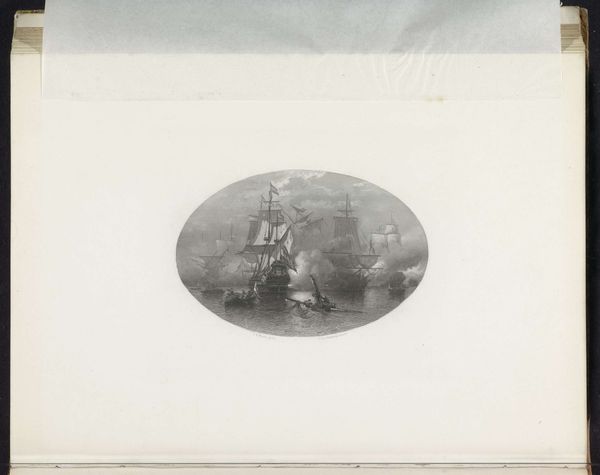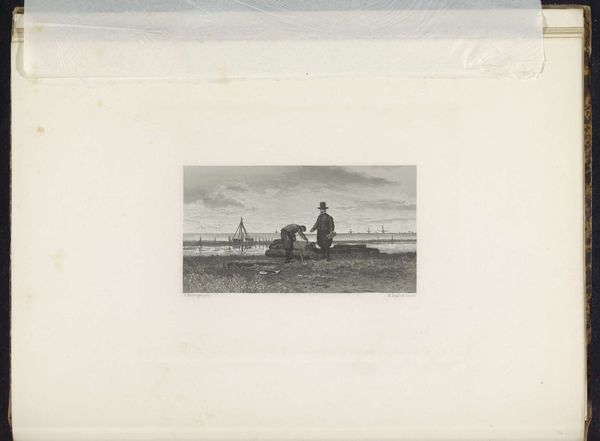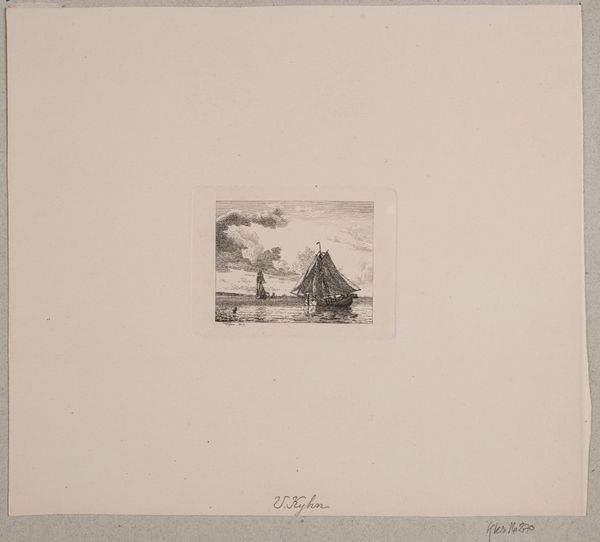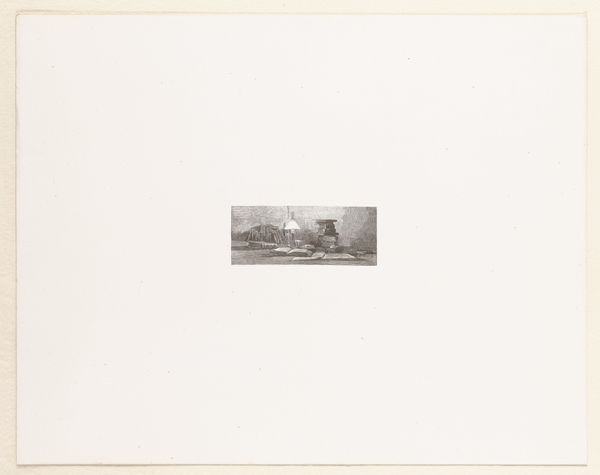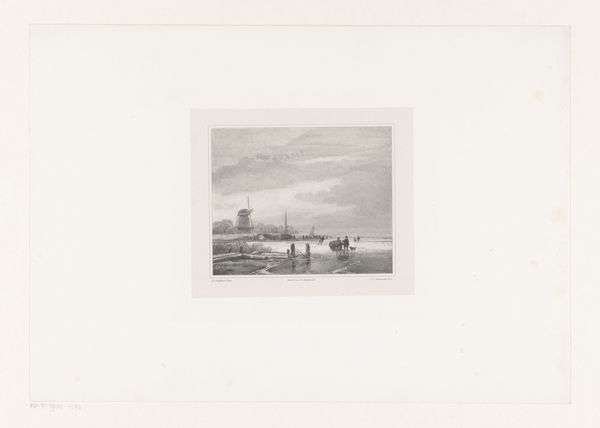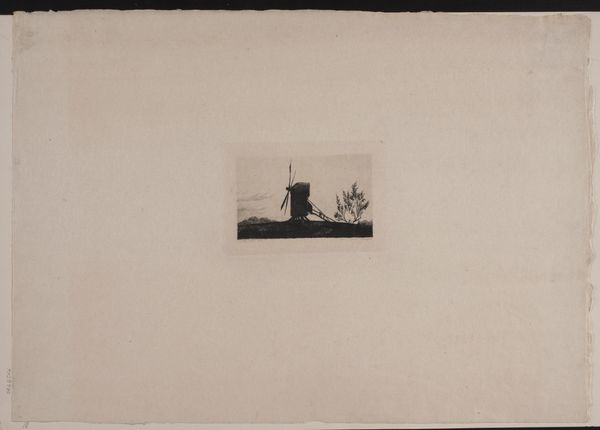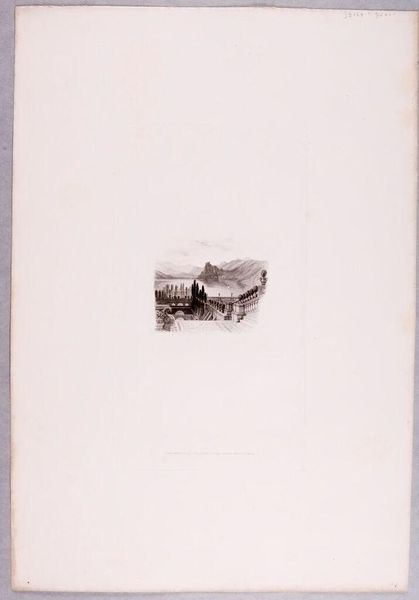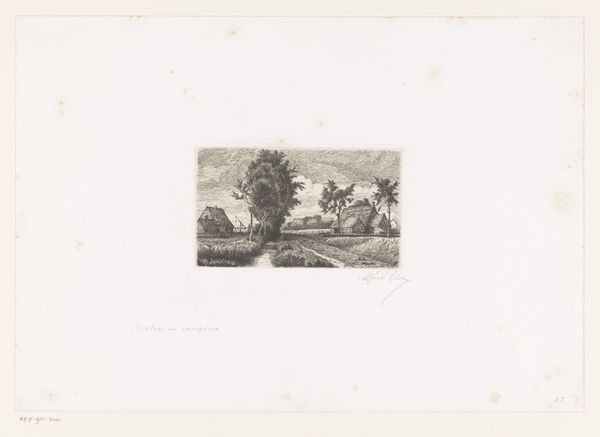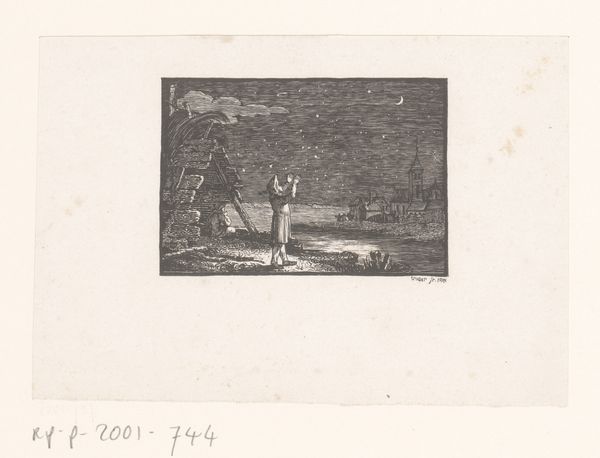
print, etching
#
pencil drawn
#
dutch-golden-age
# print
#
etching
#
pencil sketch
#
landscape
#
coloured pencil
#
watercolor
#
realism
Dimensions: height 180 mm, width 240 mm
Copyright: Rijks Museum: Open Domain
Curator: Here we have "The first windmills in Holland, 14th century," an etching by Willem Steelink from between 1865 and 1870. Editor: Oof, it's got that wistful quality. Kind of melancholic, like looking back on a simpler time that maybe wasn't so simple after all, you know? Curator: The Dutch Golden Age, a powerful source of cultural identity. The windmills themselves are not just functional, but deeply symbolic, becoming emblems of Dutch ingenuity, resourcefulness, and the eternal struggle against the water. Editor: Yeah, they do stand there defiant, almost like watchful guardians. Is it just me or does that sky feel a bit threatening, hanging over those sturdy little mills? It's beautifully rendered though, a kind of dreamy realism. Curator: Indeed. Windmills predate the Dutch Golden age but continue their symbolism representing human power over nature, specifically transforming natural forces into energy that propels life. Notice how Steelink evokes both the industriousness and the vulnerability of the community relying on this technology? The human figures at the base provide a real sense of scale. Editor: I guess there's also this…echo of a pastoral fantasy. It feels romanticized, removed, you know? Like an ancestor remembering a thing rather than a thing itself, as they say. Like someone wanted very hard to picture themselves belonging to this story. Curator: An interesting point, suggesting the very human act of creating one's identity within a historical context. Editor: So it's more than just picturesque countryside, it's loaded with meaning, the engine and backbone of community, struggle, remembrance. And those romantic grey washes lend it that wistful distance. Thanks! I love having that unpacked. Curator: My pleasure. By observing how artists engage with such familiar images, we gain valuable insight into what resonates and persists across time, thus gaining greater empathy and appreciation.
Comments
No comments
Be the first to comment and join the conversation on the ultimate creative platform.
